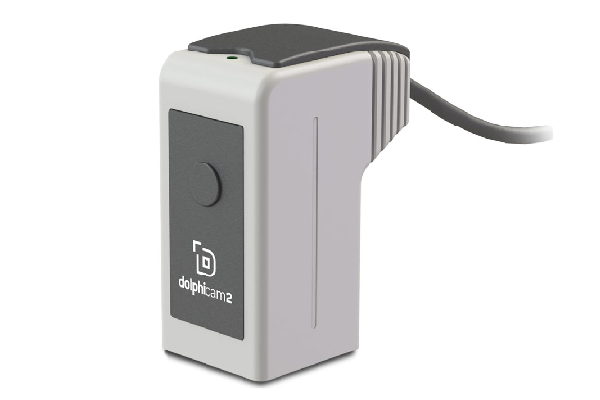Transducers (TRMs)
MxTTU
- Provides the user with a larger viewing area without sacrificing resolution or rate of evaluation
- MxTTU™ is the only portable and practical device in the world that can offer the conclusiveness of C-scans and simplified MxTTU™ evaluation. This means you can achieve the in-depth, high-quality diagnostics of traditional methods, in an easy-to-use, flexible handheld device
- Operates using the same base platform as the dolphicam2 and dolphicam2+, requiring a hardware upgrade and an additional Transducer Module (TRM)
- Users then just need to connect both TRMs to the Black Box, switch from Pulse Echo to TTU mode, and start scanning
- MxTTUTM is compatible with the full range of dolphicam2 TRMs, both with and without delay lines

TRM 0.7 MHz
- Lowest frequency on offer and is designed for the inspection ofof very thick GFRP sections and low-grade GRP materials
- Applications include wind turbine blades, ship hulls, GRP piping and composite overwrap repairs
- Typical component thicknesses are around 1–100mm
TRM 1.5 MHz
- Designed for maximum penetration of thick GFRP and thick, out-of-autoclave CFRP with porosity
- Applications include wind turbine blades, marine GFRP and thick section GFRP piping
- Typical component thicknesses are around 1-60 mm
TRM 2.5 MHz
- Well-suited to thicker section and lower grade composite material inspection. These include GFRP, out-of-autoclave CFRP as well as thick, coarse-grained metals and TTU paste adhesive bonded structures
- Applications include wind turbine blades, marine GFRP and CFRP, GFRP piping and thermal power
- Typical component thicknesses are around 1-50 mm
TRM 3.5 MHz
- The 3.5 MHz transducer module (TRM) is an excellent choice for CFRP applications, as the frequency is low enough to travel through CFRP but still high enough to get a great resolution on your inspection
- This TRM is approved and recommended to be used within both the aerospace and automotive industries for CFRP inspection
- It also workswell for thicker metals, and for inspection of attenuative metals such as stainless steel and Inconel.
- It also workswell for thicker metals, and for inspection of attenuativemetals such as stainless steel and Inconel and Pi joints
- Typical component thicknesses are around 1-40 mm
TRM 5 MHz
- The 5 MHz Transducer module (TRM) sits at the middle of our range and is a fantastic all-rounder, well-suited to both metallic and composite applications
- It provides superior resolution while maintaining good penetration through a wide variety of materials
- Applications include heavy industry, aerospace and automotive with TTU inspection of solid laminates
TRM 8 MHz
- The 8 MHz transducer module (TRM) is a great choice for a wide range of metallic applications
- This frequency provides high resolution for great sensitivity, while also providing enough penetration for fine grained metal
- It is also capable of inspection of high-grade composites, such as aerospace CFRP
- Other applications include process piping, Typical component thickness range are around 1-20 mm
TRM 10 MHz
- The 10 MHz transducer module (TRM) is our highest frequency model and provides great sensitivity for inspections of thinner components
- The short wavelengths generated by this TRM provide high spatial resolution through the depth of the component
- Sheet metal, adhesive bonding layers, thin metallic vessels and pipes can all be inspected
- Typical component thicknesses are around 1-15 mm
